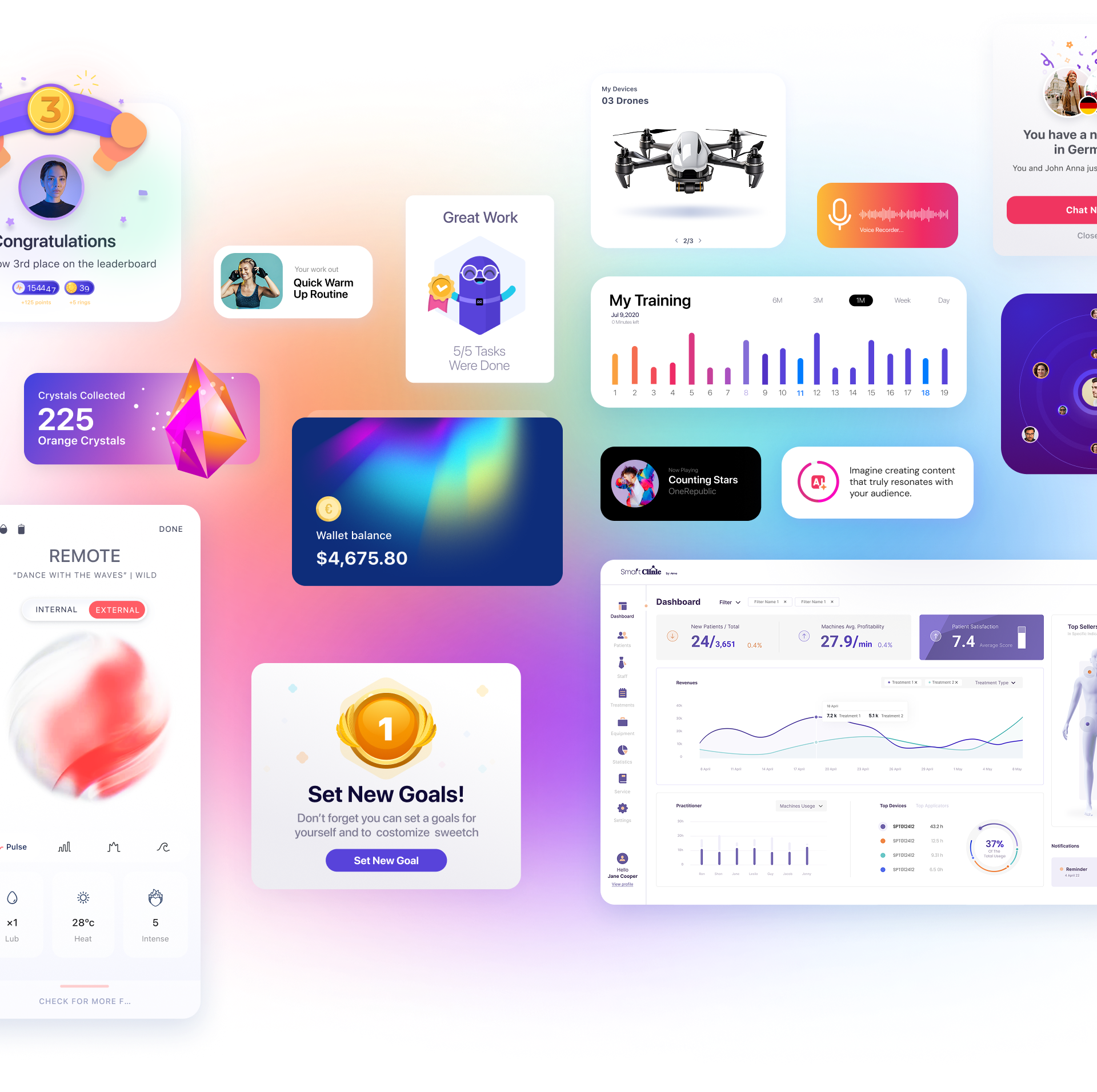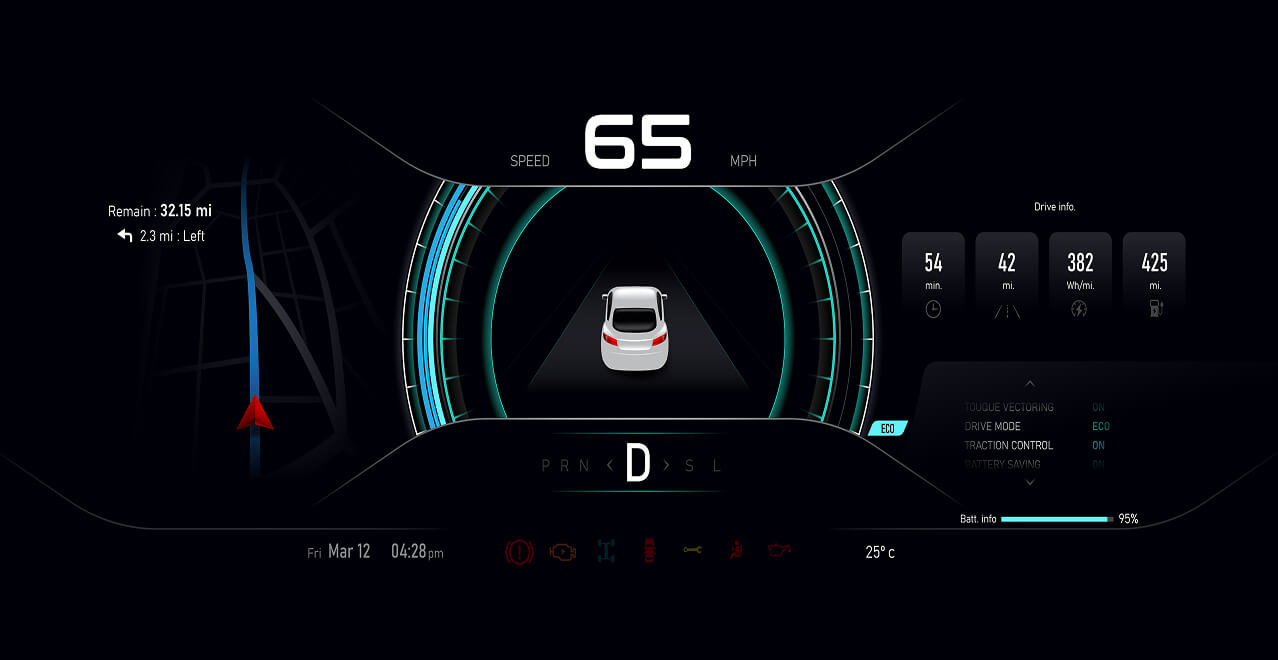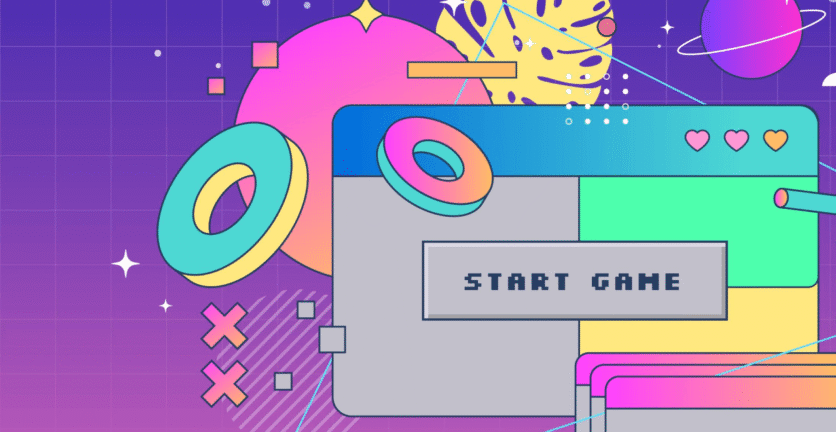Unveiling UX Design Challenges for Future Smart Dashboards
Introduction
The smart car dashboard represents the forefront of automotive innovation, blending advanced technology with user-focused design to transform how we interact with our vehicles. Yet, creating these sophisticated interfaces is far from straightforward. Designers and product managers alike are tackling a series of complex user experience (UX) challenges to ensure that these dashboards are not only feature-rich but also safe, user-friendly, and enjoyable for drivers of all backgrounds. From reducing driver distractions to achieving flawless integration with smartphones, the path to crafting the perfect smart car dashboard is fraught with obstacles demanding inventive solutions and a visionary approach. In this article, we explore the ten most pressing UX challenges in smart car dashboard design, shedding light on the critical issues and exploring the potential for innovation in the automotive world.
What’s in the Market These Days?
As we delve into the realm of smart cars, the fusion of technology and automotive design has never been more apparent. Today’s market is teeming with examples of cutting-edge dashboard designs that push the boundaries of user experience (UX). From minimalist touchscreens to highly customizable digital instrument clusters, automakers are not just focusing on the aesthetics but also on how these interfaces enhance safety, efficiency, and personal connection with the vehicle. Innovations such as voice-controlled assistants, real-time adaptive displays, and seamless mobile integration are setting new standards. Let’s explore some standout examples from leading brands that exemplify the strides being made in smart car dashboard UX, showcasing how they tackle the complex challenges of today’s driving experience.
- Tesla Model S/X/3/Y: Tesla’s approach to dashboard design is minimalist and centered around a large touchscreen interface. This design choice emphasizes the challenge of minimizing driver distraction while providing intuitive access to a wide range of functionalities, from navigation to vehicle settings. Tesla’s software also continuously updates, showcasing how dashboards can evolve over time to meet new user needs and incorporate advanced technologies.
- Mercedes-Benz MBUX (Mercedes-Benz User Experience): The MBUX system stands out for its voice control capabilities, “Hey Mercedes” voice assistant, and the ability to learn from the driver’s habits. This addresses the challenge of integrating effective voice control and personalization into the car’s UX, offering a more intuitive and interactive experience.
- Audi Virtual Cockpit: Audi’s Virtual Cockpit is a fully digital instrument cluster that replaces traditional dials. It offers customizable information displays, integrating Google Earth imagery for navigation, and detailed car data. This innovation tackles the challenge of managing information overload by allowing drivers to tailor the dashboard display to their preferences and needs.
- Ford Mustang Mach-E SYNC 4A: Ford’s SYNC 4A system in the Mustang Mach-E features a large vertical touchscreen with cloud-connected navigation, voice recognition, and customizable profiles. It exemplifies the challenges of seamless mobile device integration and the importance of designing for contextual awareness, with features that adjust to driving habits and preferences.
- Volvo XC40 Recharge Google Android Interface: The Volvo XC40 Recharge incorporates an infotainment system powered by Google’s Android OS, offering Google Maps, Google Assistant, and access to the Google Play Store directly from the dashboard. This addresses the challenge of ensuring real-time performance and seamless integration with mobile devices and apps, setting a precedent for collaboration between automotive and technology companies.
Designing UX for smart car dashboards presents a unique set of challenges that require careful consideration and innovative solutions. Here are ten UX challenges when designing for a smart car dashboard, highlighting the complexity and importance of user experience in the automotive industry:
- Minimizing Driver Distraction: The primary challenge is to design interfaces that provide necessary information and functionalities without diverting attention from the road. Balancing information accessibility with safety is crucial.
- Ensuring Accessibility for All Drivers: Dashboards must be universally accessible, catering to drivers of all ages and abilities. This includes considering visual, auditory, and physical impairments in the design process.
- Adapting to Diverse User Behaviors: Drivers have varied preferences and habits. Designing a dashboard that is intuitive for a wide range of users, from tech-savvy individuals to those less comfortable with technology, is a significant challenge.
- Integrating Voice Control Effectively: While voice control can reduce physical distractions, ensuring it works accurately under various conditions (like road noise or accents) is challenging. The system must understand and process commands efficiently to be truly beneficial.
- Managing Information Overload: Smart dashboards can display a vast amount of data, from navigation to vehicle status. Organizing this information without overwhelming the driver requires thoughtful UI/UX design strategies.
- Ensuring Real-Time Performance: Dashboard interfaces must operate in real-time, with minimal latency. Delays in displaying critical information (such as collision warnings) can compromise safety.
- Designing for Contextual Awareness: Smart dashboards should adapt to changing contexts, such as driving conditions, weather, and the driver’s state. Creating a system that intelligently adjusts what it displays based on context is complex.
- Balancing Personalization with Privacy: While personalization can enhance the driving experience, it raises privacy concerns. Designing a system that offers customization while safeguarding user data is a key challenge.
- Seamless Integration with Mobile Devices: Many drivers expect to connect their smartphones with their car dashboards. Designing an interface that integrates smoothly with a variety of devices and platforms is essential.
- Future-Proofing the Design: The automotive industry is rapidly evolving, especially with the advent of autonomous driving technologies. Designing a dashboard that can adapt to future advancements and remain relevant is a significant challenge.
As we navigate through the complexities of designing user experiences for smart car dashboards, it becomes evident that the journey is as intricate as it is innovative. Each challenge presents an opportunity to push the boundaries of what’s possible, blending technology with human-centric design to create safer, more intuitive, and engaging driving experiences. The future of automotive UX lies in our ability to adapt, innovate, and empathize with the end-user, ensuring that every advancement enhances the joy and safety of driving. As designers and product managers in this dynamic field, our mission extends beyond solving today’s challenges; it’s about anticipating the needs of tomorrow’s drivers and crafting experiences that make every journey memorable. In doing so, we are not just designing dashboards; we are reimagining the future of mobility itself. Let us embrace these challenges with open minds and creative hearts, driving forward to a future where technology and human experience merge on the road ahead.





 Book a Call
Book a Call





